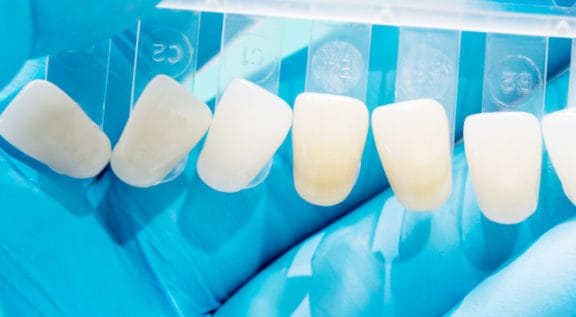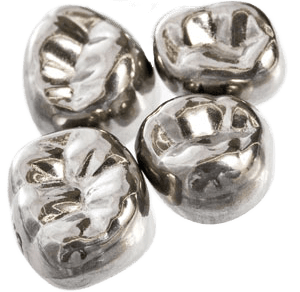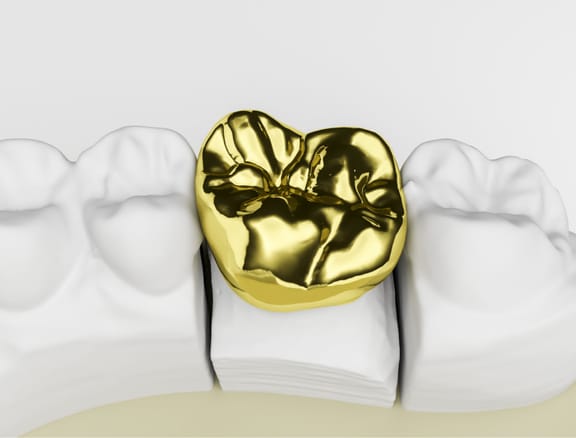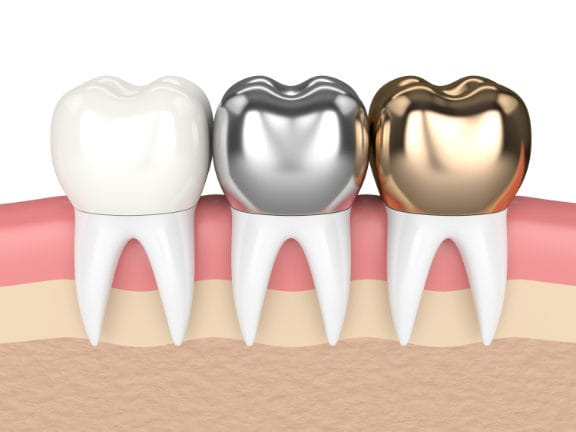Crown Procedure
A crown is sometimes termed a "cap" or "jacket." A crown will restore a large filling or a cracked tooth to its original size, shape and tooth color. A crown may be recommended after root canal therapy has been completed, as the tooth tends to become brittle and is more likely to fracture. A crown can strengthen and protect the remaining tooth structure and improves the appearance of your teeth. With the advances in technology, we now have the ability to make ceramic crowns with no metal.
To place a crown, your dentist must reduce 1-2 mm of the tooth to make room for it. Your dentist will then use a piece of thread or cord or use a laser to push the gum down around the tooth, to take an impression of the tooth. The impressions are sent to the lab where the crown is made. During that time, you will have a temporary crown. These crowns are usually made of plastic and are made in your dentist's office on the day of your visit. They are not meant to last. If a temporary crown is left in the mouth, the cement eventually washes out and the tooth can decay. At a second visit, your dentist will remove the temporary crown and test the permanent one. Sometimes crowns need additional polishing, glaze or some other adjustment before they are placed. Once the crown is ready, it's cemented to your tooth.
Types of Crowns
With today's advances in dentistry, there are several options when choosing a type of crown:
- Porcelain outer surface with a metal base crown
- Pure porcelain or composite crown
- All metal crown, which is usually gold
They all differ in durability, strength, appearance and cost.
Full Porcelain Crowns
These are very aesthetic, bonded crowns. They are mostly used for front teeth because they are the most natural looking type of crown and are often used in "cosmetic" dentistry.
There are many types, but they all have a common feature - no metal. They can occasionally break, but dental technology has advanced far enough to make them quite strong.

Stainless Steel Crowns
Stainless steel crowns, also known as 'silver crowns or caps', are a very common procedure used to restore 'baby teeth' (and occasionally permanent teeth) that have large caries or those that had a pulpotomy (baby root canal). Although most teeth can be filled with a white or silver filling material, stainless steel crowns are by far the most predictable and durable option to fix 'baby teeth' with large caries, large defects, or damaged enamel. This is particularly true in very young children that have caries at a young age, since it is preferred that the 'fixed' teeth last as long as possible.

Gold Crown
The 'gold' standard. Dental gold is about 60% gold alloy which is meant to match the hardness of the enamel of opposing teeth so both wear about evenly, an important trait. Gold does not tarnish or corrode and has some bacterial-inhibiting quality. Gold crowns are strong and will not break. However, gold crowns obviously are not considered aesthetic; they are gold colored. Usually, gold crowns are used for lower back molars because they aren't as noticeable.

Crown Aesthetics
If your smile is in need of a makeover, crowns can provide predictable results. Crowns can give an unattractive tooth back its beautiful shape and color. For smaller or worn down teeth, a crown can restore the natural size of the old tooth. A crown can replace either part of or the tooth's entire structure. For procedures requiring only the areas visible from the outside, a veneer may be an alternative option.
